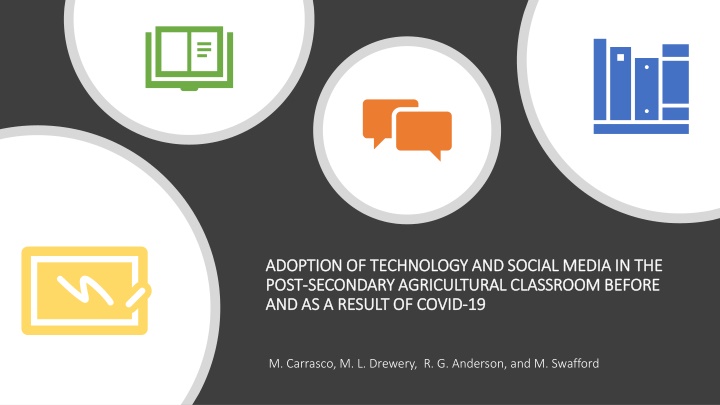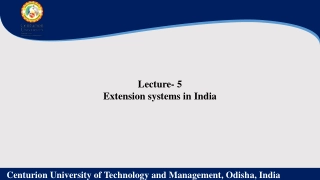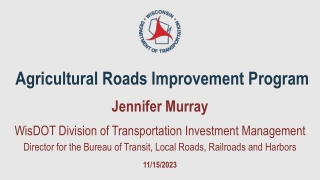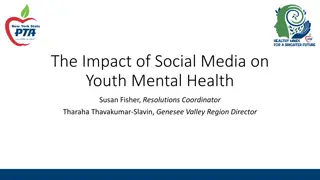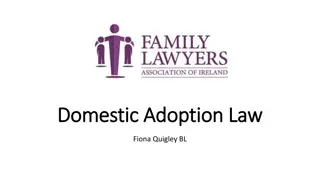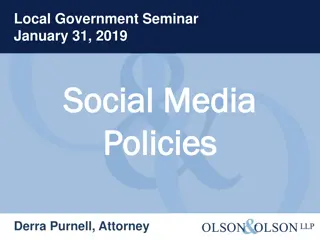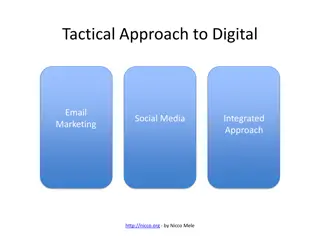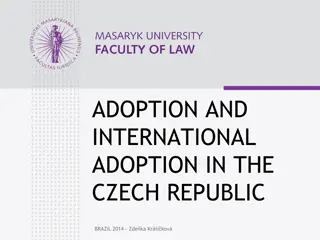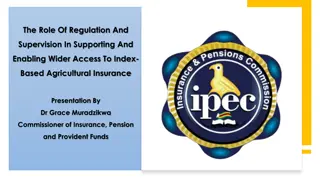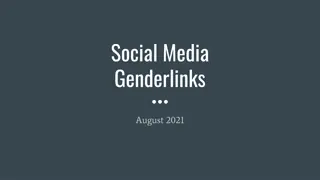Adoption of Technology and Social Media in Post-Secondary Agricultural Classroom During Covid-19
This study explores faculty adoption of technology and social media in post-secondary agricultural education in response to Covid-19 disruptions. It assesses shifts in technology use, adoption of social media for teaching, and future incorporation of social media channels.
Download Presentation

Please find below an Image/Link to download the presentation.
The content on the website is provided AS IS for your information and personal use only. It may not be sold, licensed, or shared on other websites without obtaining consent from the author.If you encounter any issues during the download, it is possible that the publisher has removed the file from their server.
You are allowed to download the files provided on this website for personal or commercial use, subject to the condition that they are used lawfully. All files are the property of their respective owners.
The content on the website is provided AS IS for your information and personal use only. It may not be sold, licensed, or shared on other websites without obtaining consent from the author.
E N D
Presentation Transcript
ADOPTION OF TECHNOLOGY AND SOCIAL MEDIA IN THE ADOPTION OF TECHNOLOGY AND SOCIAL MEDIA IN THE POST POST- -SECONDARY AGRICULTURAL CLASSROOM BEFORE SECONDARY AGRICULTURAL CLASSROOM BEFORE AND AS A RESULT OF COVID AND AS A RESULT OF COVID- -19 19 M. Carrasco, M. L. Drewery, R. G. Anderson, and M. Swafford
Introduction Coronavirus 2019 (COVID-19) disrupted daily life on a global scale. Arguably, those involved in education were among the most affected by COVID-19 as mandated school closures demanded an abrupt shift to online classrooms. The diffusion of innovation theory provides the framework for our study, which evaluated post- secondary agricultural faculty adoption and plans for continued use of social media for teaching as a result of COVID-19. Social media has previously received attention as an educational tool for college students and may be a substitute for traditional approaches to learning.
Purpose & Objectives Purpose: Purpose: to assess faculty adoption of social media in the post-secondary agricultural classroom in response to COVID-19 Objectives: Objectives: 1. Determine the frequency of faculty use of technology such as computers, smartphones, and tablets before and as a result of COVID-19. 2. Determine the adoption and frequency of faculty use of social media for teaching before and as a result of COVID-19. 3. Determine what social media channels were not regularly utilized in courses prior to COVID-19 but will be incorporated into future courses.
Methods Mixed-methods approach to data collection, facilitated through an electronic survey-based questionnaire Population of interest: faculty and instructors who held a formal teaching appointment based in agricultural sciences during the COVID-19 pandemic (spring 2020, summer 2020, fall 2021) at colleges and universities across seven southern states. Questionnaire designed to assess the impact of COVID- 19 on teaching in agricultural-based disciplines at the postsecondary level. Questionnaire consisting of 5 sections about personal and institutional demographics, training in teaching, technology/social media use, teaching experiences during COVID-19, and professional future training and professional development in relation to online teaching.
Results There were dramatic shifts in use of technologies for teaching; these shifts overwhelmingly indicate that, as a result of COVID- 19, faculty are using their electronic devices at higher frequencies. Most respondents reported never using Facebook, Instagram, Twitter, TikTok, SnapChat, or LinkedIn prior to COVID-19 and still reported never when asked about using them for teaching as a result of the pandemic. The most notable change in faculty use of social media for teaching were YouTube where we saw an increase of usage as a result of COVID-19. Despite the limited use of most social media channels as a result of COVID-19, faculty who reported not utilizing social media for teaching prior to the pandemic intent to incorporate it into future courses moving forward.
